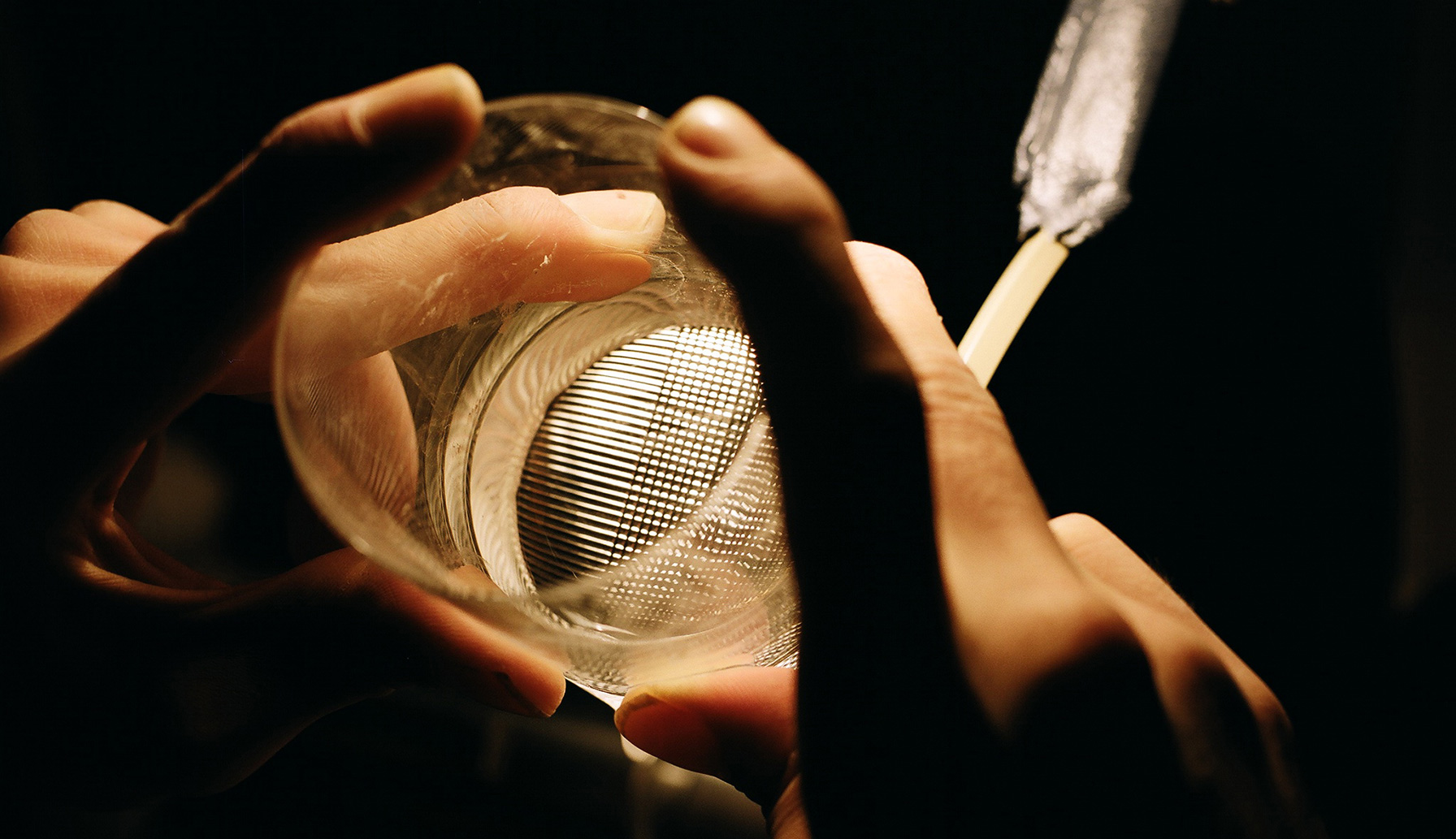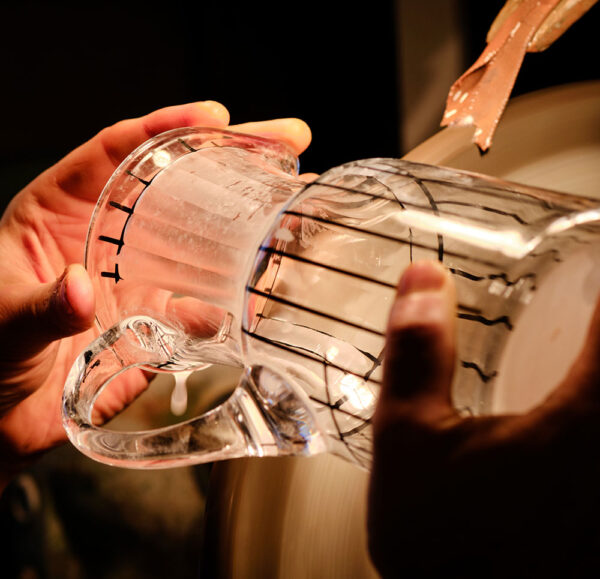
Login
NEW CUSTOMERS
By creating an account with our store, you will be able to move through the checkout process faster, store multiple shipping addresses, view and track your orders in your account and more.
CREATE AN ACCOUNTSEARCH
Shopping cart
In 1931, architect Adolf Loos, a pioneer of modern architecture, designed Drinking Set no.248 for Lobmeyr—a true design classic.
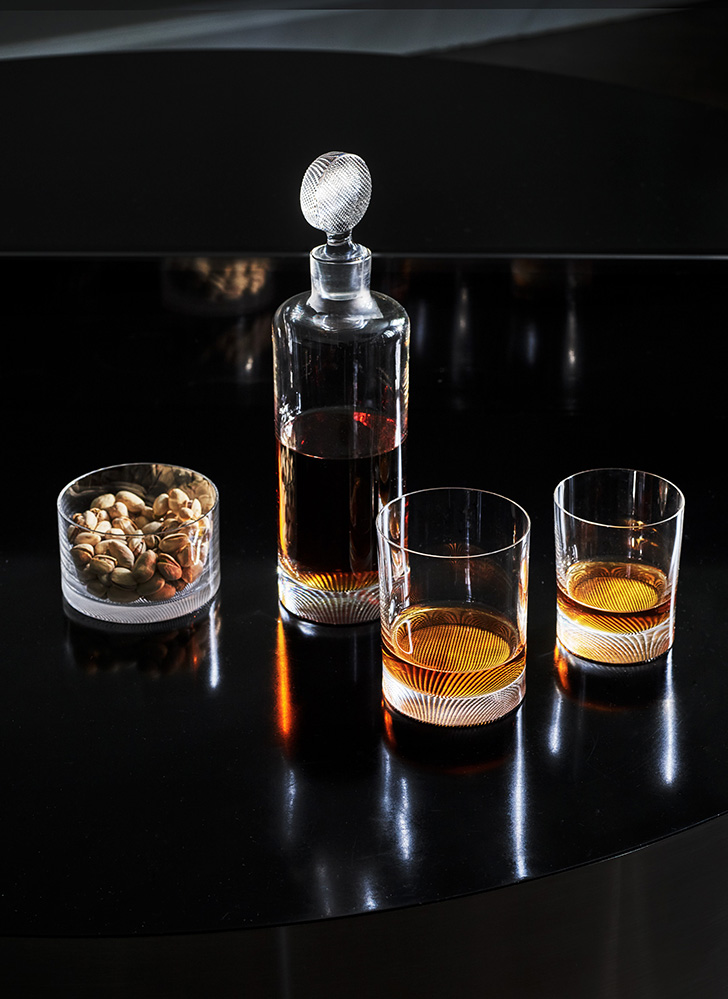
Round Becomes Square
As in the Loos buildings, straight lines and right angles predominate the drinking set; in fact, the original design consists of little more than five rectangles creating the cylindrical shapes. Since blown glass can never be blown to a fully angular shape, the curvature of the bottom is ground flat when the tumblers come out of the glassworks. The base of each glass is ground down, first on an iron plate with silicon carbide and then more finely on a diamond wheel, until the curvature of the base has been removed and the final target height of the glass is achieved.
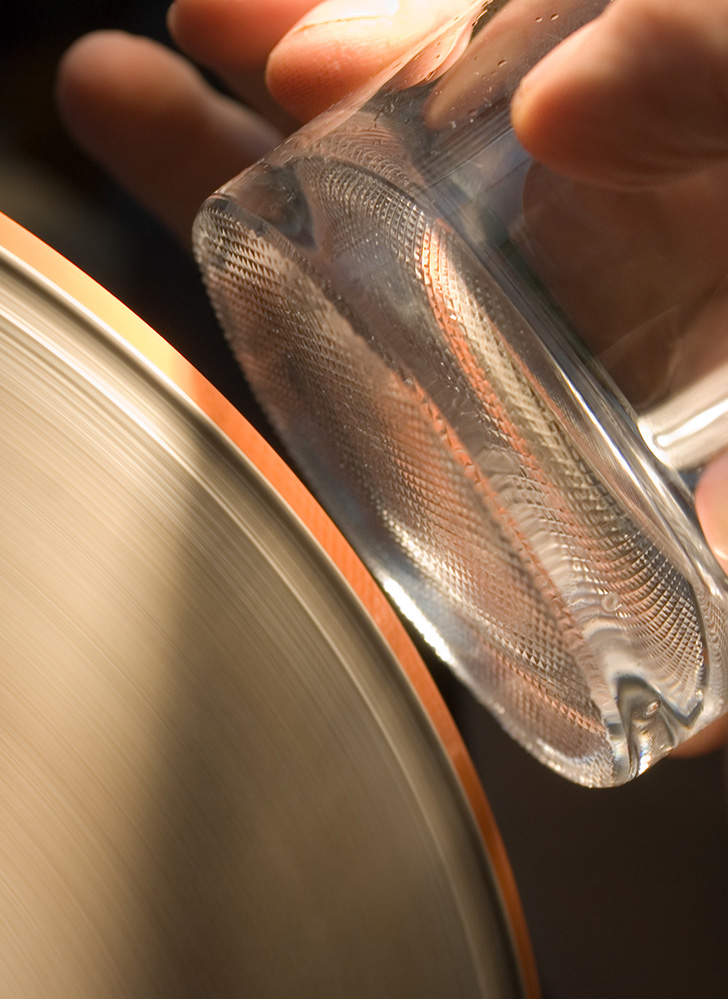
The radically modern service of cylindrical tumblers and a carafe has a fine diamond cut on the bottom of the glass, which, although quite complicated to produce, imbues the minimalist design with life and creates elegantly fascinating light reflections.
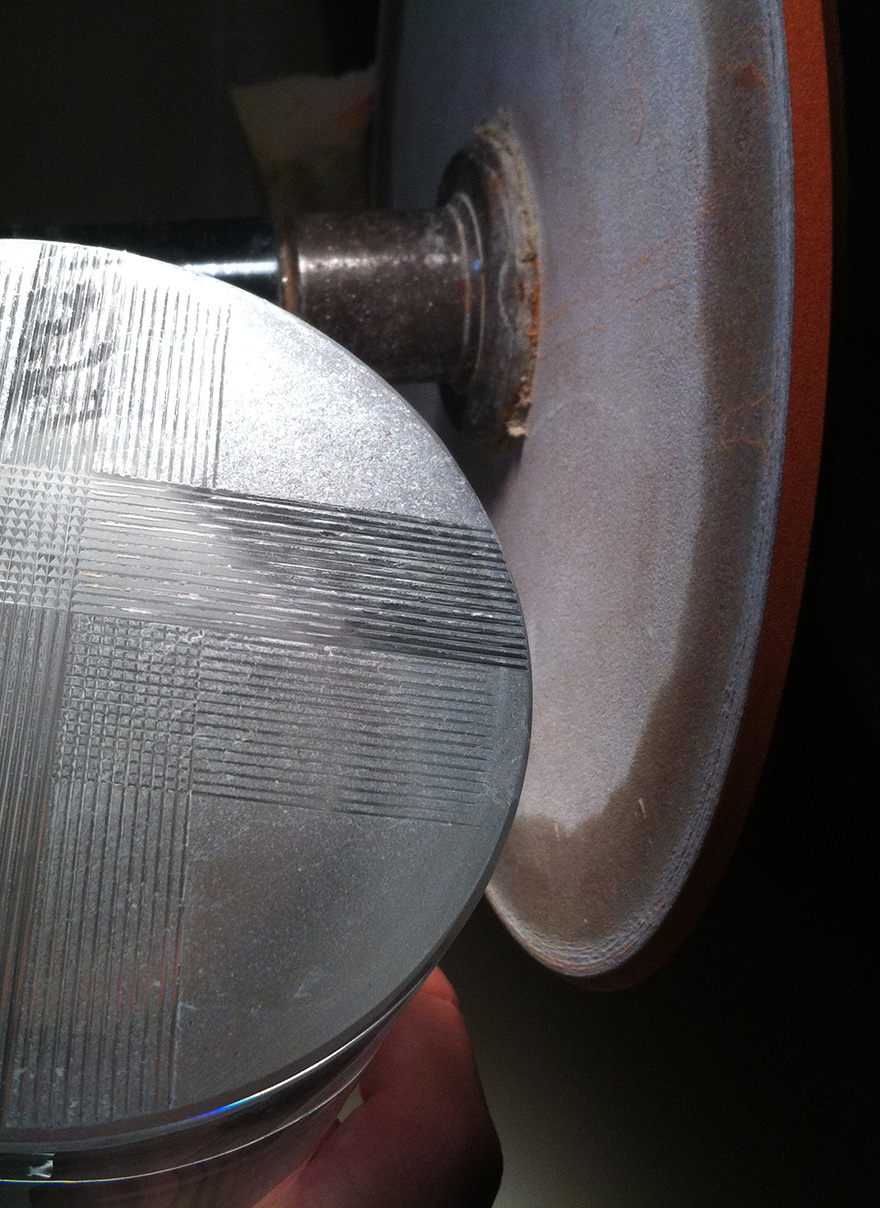
A Multitude of Tiny Diamonds
Then the decorative sanding begin. On a large grinding wheel with numerous grooves, every second longitudinal wedge cut is first lightly nicked, and then the glass is rotated 90 degrees to make the cross grooves. Only then is each line carefully extended in a wedge cut through to the very edge using a fine corundum wedge wheel—criss-crossing all the way. The rows of tiny wedges are ground at right angles, resulting in miniscule pointed pyramids covering the entire surface. Now the bottom is lightly faceted, ensuring that nothing can splinter. Finally, the fine pyramids of the cut, called a diamond cut, are carefully brushed with polishing powder, creating an elegant, matte silk shine.
